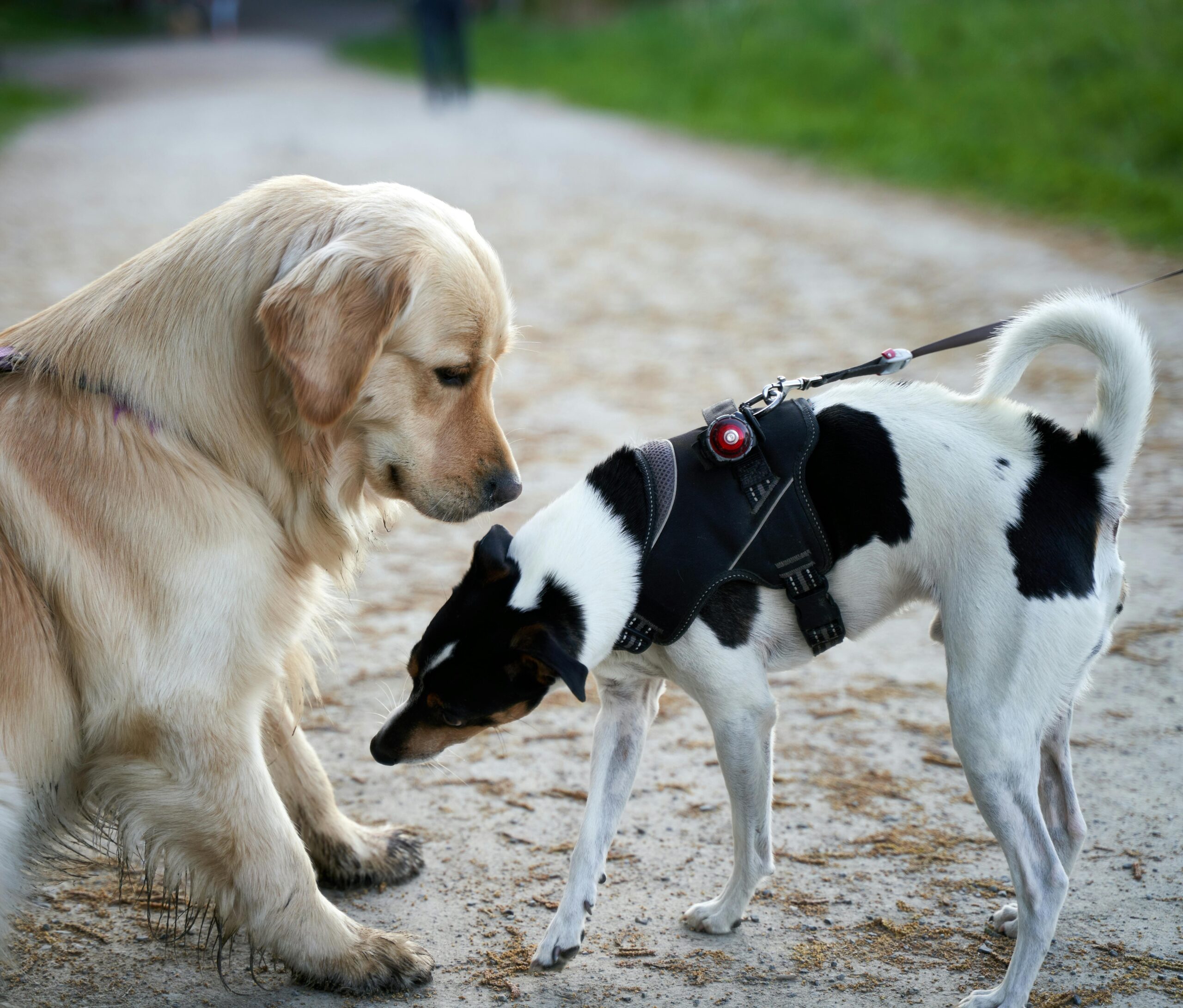Although bringing a new pet into your house can be interesting and fulfilling, there are sometimes difficulties involved. Good introductions are crucial to guarantee a harmonic coexistence between your new pet and your current furry friends. Using simple, doable instructions and useful advice, this article will help you introduce a new pet to other pets in your house.

Why Proper Introductions Are Crucial
Preventing Stress for All Pet
A sudden introduction can stress your current pet as well as the others in your house. Proper introduction of them takes time, but it guarantees a better transition and helps to lower anxiety.
Encouraging Positive Relationships
Good introductions build the basis for your dogs to grow to trust and create relationships. This raises their long term chances of living in harmony.
Avoiding Aggressive Behavior
Pets introduced without planning might cause territorial conflicts and violence. A methodical approach can prevent these problems.
Preparing for the Introduction
Choose the Right Timing
Bringing a new pet home calls for timing. Make sure your house is peaceful, and that your current pets are in good health. Steer clear of bringing a new pet into a busy or trying time.
Create Separate Spaces
Set aside somewhere the new pet can feel safe before bringing it home. Food, drink, toys, and bedding should all find a place in this area. It will be a brief haven during the first days.
Gather Necessary Supplies
Load the new pet with basics, including a different set of dishes, litter boxes, leashes, or cages. Individual supplies help to avoid disputes about shared resources.
Introduction Between Dogs
Start With Scent Swapping
Dogs largely rely on their sense of smell. Start the introduction process by allowing the dogs to become acquainted by swapping objects like blankets or toys between them.
Meet on Neutral Ground
To discourage territorial behaviour, introduce the dogs to a neutral area, perhaps a friend’s yard or a park. Keep both dogs on a leash and let them approach one other progressively.
Supervise Initial Home Meetings
Bring the dogs home and let them meet in a supervised environment once they have socialized well in a neutral area. Maintaining their leashes on, attentively watch their conduct.
Introduction Between Cats
Allow Time for Adjustment
Cats are territorial and could require more time to become adjusted. Let the new cat settle in before meeting the resident cat by keeping it in its own area for several days or a week.
Use Visual Introductions
Let the cats see each other over a barrier such as a baby gate or a cracked door after a few days. This lets them watch and grow used to one another from a distance.
Gradual Face to Face Meetings
Once both cats seem at peace, schedule quick supervised meetups. Treats can help to establish good relationships; separate them if conflict develops.
Introduction Between Dogs and Cats
Start With Separation
Initially keep the dog and cat in different areas. To help the dog get acquainted with each other’s fragrance, let it sniff the bedding or toys of the cat or vice versa.
Controlled First Meeting
Bring the dog and cat into regulated surroundings. Let the cat prowl around while keeping the dog on a leash. Watch the dog’s responses to make sure it doesn’t bark too much or lunge.
Encourage Calm Behavior
Treats and praise will help both dogs to exhibit calm demeanor. Increase their time together gradually, being sure both of them feel safe.
Introduction Between Other Types of Pets
Small Animals and Cats or Dogs
If you are introducing a small pet a rabbit or guinea pig make sure its housing is safe. Let the cat or dog watch from a distance and reward quiet behaviour.
Birds and Other Pets
Make sure the birds you are introducing are out of reach and in a strong cage. Supervised always let the other pet approach the cage gradually.
Reptiles and Amphibians
Keep reptiles in their enclosures throughout introductions. Some pets especially cats may be intrigued but make sure the reptile is safe by keeping a stable surroundings.
Common Challenges and Solutions
Signs of Aggression
Should either pet exhibit hostility, separate them right away and allow additional time for adjustment. If necessary, consult a behaviourist or professional trainer.
Lack of Interest
Some animals might first disregard one another. This is natural and frequently a sign that they feel safe. Let interactions grow organically, free from coercion.
Resource Guarding
Pets could vie for toys, food, or attention. To prevent disputes, assign specific resources and monitor mealtimes.
Tips for Long Term Harmony
Encourage Positive Interactions
Reward decent behaviour with treats and compliments. Good reinforcement promotes cooperative and friendly surroundings.
Establish Routines
Routines are what pets love. Maintaining regular feeding, playfulness, and exercise regimens will help to lower stress and encourage stability.
Monitor Their Relationship
Watch your pets’ interactions even after good introductions. Take quick care of any tension related symptoms to stop them from getting worse.
When to Seek Professional Help
Persistent Aggression
See a veterinarian or animal behaviourist for advice if your pets still exhibit aggressive behaviour several weeks into running.
Anxiety in Pets
Professional advice can help solve underlying problems and ease the adjustment if your pets seem unduly worried or anxious.
Integrating Unique Pets
See professional guidance catered to their particular needs and behaviour for exotic animals or uncommon combinations.
Frequently Asked Questions (FAQs)
How long does it take for pets to get along?
Pets’ times of adjusting to one another vary significantly. While some dogs may bond in a few days, others could need weeks or even months. The species, temperance, and past experiences of every pet affect the length of the process. Throughout this time, patience is really vital.
What if my pets never get along?
While most animals may live together amicably with appropriate introductions, some may never become best friends. Should this occur, concentrate on controlling their interactions to avoid confrontational situations. Sort their areas and watch their time together. See an animal behaviourist to get customized answers as well.
Can I introduce a new pet to my senior pet?
Indeed, however, when introducing a new pet to a senior animal, extra attention is required. Older dogs may have reduced energy or health problems; hence, pick a new companion whose attitude and activity level fit yours. Always give the senior pet’s desire for comfort and space a top priority.
How can I tell if the introduction is successful?
A good introduction will show comfortable body language, shared curiosity, and a readiness to share a space free of conflict. Your pets are getting along if they eat, play, or relax close to one another without displaying any stress.
Should I let my pets “figure it out” on their own?
Not number. Pets left to interact without direction may cause poor experiences or conflict. Always monitor first exchanges and act if needed. Positive, under control events help your pets develop trust.
Bonus Tips for Smooth Pet Introductions
Use Calming Products
If your animals exhibit stress during introductions, think about utilizing pet safe calming tools. Products ranging from natural supplements to pheromone diffusers and sprays can help foster a more laid-back atmosphere.
Tire Them Out Beforehand
Make sure lively dogs have enough of activity before they encounter one other. During introductions, a worn-out pet is less likely to show hostile or over enthusiastic behavior.
Stay Calm and Positive
Your animals detect your feelings. During introductions, keep cool and assured them. Steer clear of yelling or punishing since this may raise conflict among your animals.
Key Takeaways for Pet Introductions
In essence, these are the key things to keep in mind while bringing a new pet to your current one:
Preparation is Vital:
Before bringing the new pet home, be sure you have distinct supplies and areas ready.
Take It Slow:
Rushing the process could cause disputes and tension. Incremental introductions foster confidence.
Monitor Body Language:
Watch for indicators of tension, hostility, or calm to know how your dogs are doing.
Positive Reinforcement Works:
Reward calm and friendly behaviour to inspire positive encounters.
Patience Pays Off
Though it takes time, harmonizing a relationship between dogs is well worth the work.
These ideas will help you negotiate the introduction process with confidence and produce a loving, multi pet family.
Encouraging Readers to Take Action
Spend some time carefully planning every stage of the introduction of a new pet to your family. Use the advice and strategies in this book to guarantee a seamless and effective changeover. Share this article with other pet enthusiasts who could find these techniques useful and assist them to establish a quiet home for their scaly, feather, or furry pals.
Share with me a query or experience. Write a note below! Your narrative or comments can motivate and support others on their path of pet parenthood.
Conclusion
Bringing a new pet into your current collection calls for care, time, and patience. Following these guidelines will help you to establish a loving surroundings in which every one of your animals feels secure. Remember each pet is different; so, modify your strategy depending on their needs and personality. Your house will be a harmonic and joyful place when your furry, feathery, or scaly pet becomes the best friend with time and effort.
